WE-EF AM-K Poles and PFL240 Luminaires for Saudi Arabia
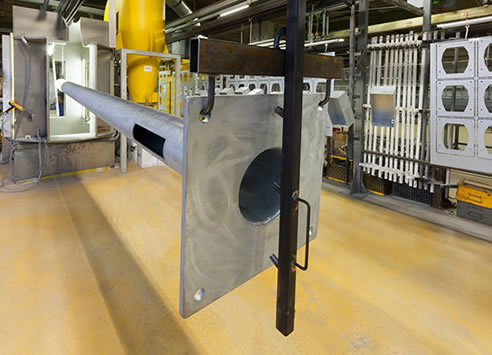
The AM-K poles are made from round conical, seamlessly drawn, hot-dip galvanised steel.
Large-scale project in Saudi Arabia uses hundreds of WE-EF poles from the Neuendorf plant, Germany.
Near Riyadh, the capital city of Saudi Arabia, a whole city of science is currently emerging from the desert sands. The King Abdullah Petroleum Studies and Research Centre (KAPSARC) is the latest addition to the campus of the Princess Nourah Bint Abdulrahman University, which opened in 2011. The centre officially started its work at the beginning of 2016, even before the construction work was fully completed.
In addition to its striking central building, the research centre also comprises designs from London-based Zaha Hadid Architects for additional institute buildings and a housing complex for researchers and employees. WE-EF has supplied hundreds of AM-K poles and PFL240 luminaires to Riyadh for lighting the centre's roads and pathways; this was a large-scale project which kept the Neuendorf plant 2 very busy.
The AM-K poles are made from round conical, seamlessly drawn, hot-dip galvanised steel. The transformation of semi-finished products to assembly-ready luminaire poles is automated to some extent, but still requires careful craftsmanship - precise weld seams, which are set in a semi-automatic process, are neatened and polished by hand with great finesse. Cable entries and service openings are cut out by robot-guided plasma cutting machines.

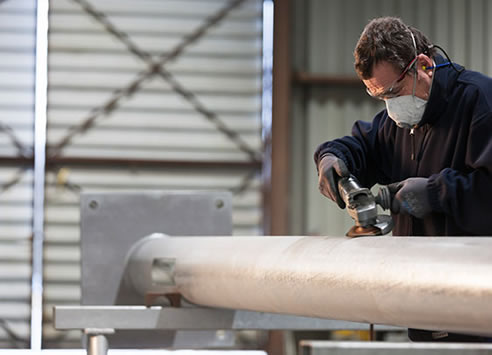
The transformation of semi-finished products to assembly-ready luminaire poles is automated to some extent, but still requires careful craftsmanship - precise weld seams, which are set in a semi-automatic process, are neatened and polished by hand with great finesse.
The surface treatment of the poles is a major factor in their resistance to corrosion and therefore their durability - a strong argument in the light of the harsh desert climate. After being manually polished, the steel poles from WE-EF's Neuendorf plant undergo hot dip galvanisation, chrome-free passivation and then a powdercoat finish. A special coating system that can process poles up to a total length of 9.3 m is used. Continuous measurements of the zinc and powder coating thicknesses ensure consistently high quality.
"Logistics in the production of the poles alone is, of course, a challenge due to the unwieldy nature of the products," WE-EF's Head of Production, Matthias Lößner explained. "But the effort is worth it because of the benefits for our customers - luminaires and poles of perfect quality can be obtained from one source." Street and pathway lighting luminaires from WE-EF have proven themselves both in the Arabian Desert and around the globe, from private gardens in Brandenburg to promenades in Singapore.
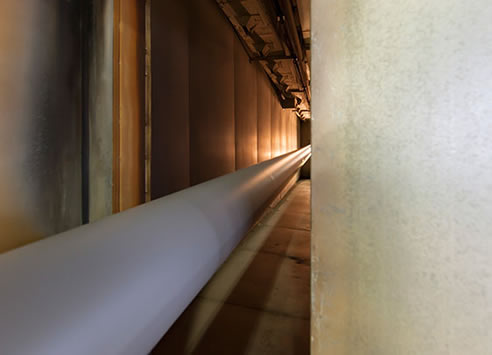
The surface treatment of the poles is a major factor in their resistance to corrosion and therefore their durability.
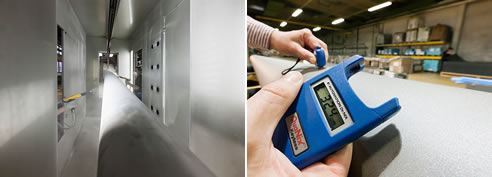
After being manually polished, the steel poles from WE-EF's Neuendorf plant undergo hot dip galvanisation, chrome-free passivation and then a powdercoat finish. Continuous measurements of the zinc and powder coating thicknesses ensure consistently high quality.
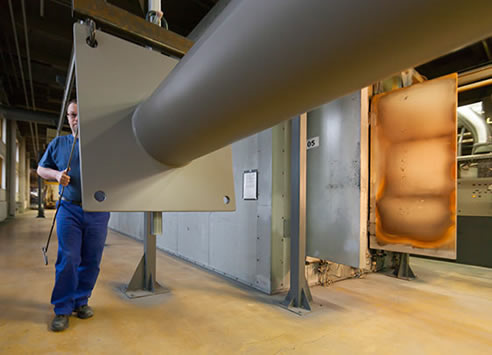
Street and pathway lighting luminaires from WE-EF have proven themselves both in the Arabian Desert and around the globe, from private gardens in Brandenburg to promenades in Singapore.

|









 Modern Catenary Solution Fit for
Modern Catenary Solution Fit for WE-EF's New Managing Director for
WE-EF's New Managing Director for A New Era for WE-EF LIGHTING – A Home
A New Era for WE-EF LIGHTING – A Home Myers Park Lighting Upgrade:
Myers Park Lighting Upgrade: Bridging the Past and Future: Old Murray
Bridging the Past and Future: Old Murray WE-EF Profile Projectors for Sharper
WE-EF Profile Projectors for Sharper Award-winning Bay Pavilions, Arts +
Award-winning Bay Pavilions, Arts + Enhancing Transit Experience at Byron
Enhancing Transit Experience at Byron Intelligently Illuminating the Bay Run
Intelligently Illuminating the Bay Run WE-EF Lighting's Role in Protecting
WE-EF Lighting's Role in Protecting Sustainable LED Upgrade Kit from WE-EF
Sustainable LED Upgrade Kit from WE-EF A Natural Paradise Rottnest Island by
A Natural Paradise Rottnest Island by WE-EF LIGHTING's Braeside Expansion
WE-EF LIGHTING's Braeside Expansion Street and Area Pole-Mounted Luminaires
Street and Area Pole-Mounted Luminaires Smart Lighting Control Technology from
Smart Lighting Control Technology from High-Output Floodlights with Modern LED
High-Output Floodlights with Modern LED Bondi Beach Pavilion Reimagined by WE-EF
Bondi Beach Pavilion Reimagined by WE-EF Balancing Needs: Sea Turtle Conservation
Balancing Needs: Sea Turtle Conservation Architecturally Pleasing Recessed
Architecturally Pleasing Recessed Luminaires for Lake Macquarie Multi-Arts
Luminaires for Lake Macquarie Multi-Arts
